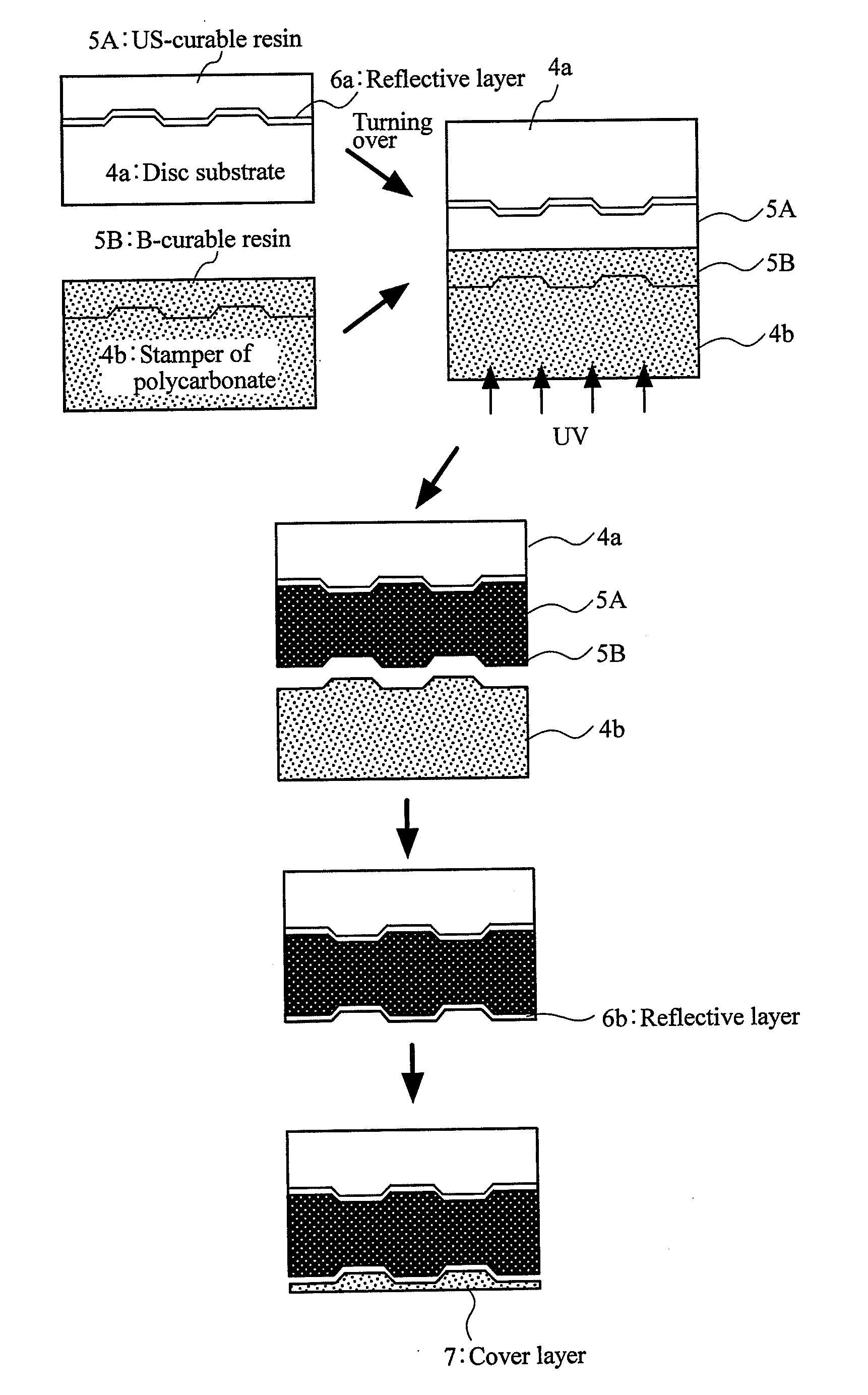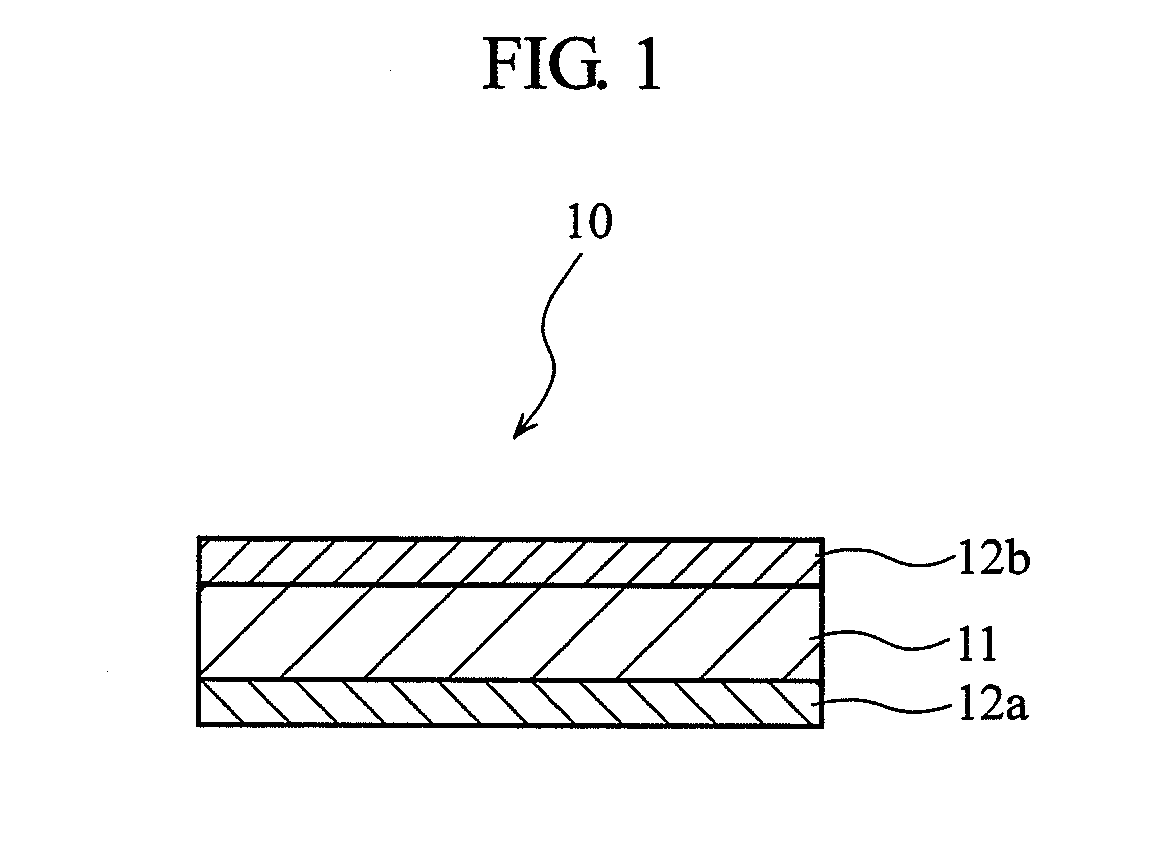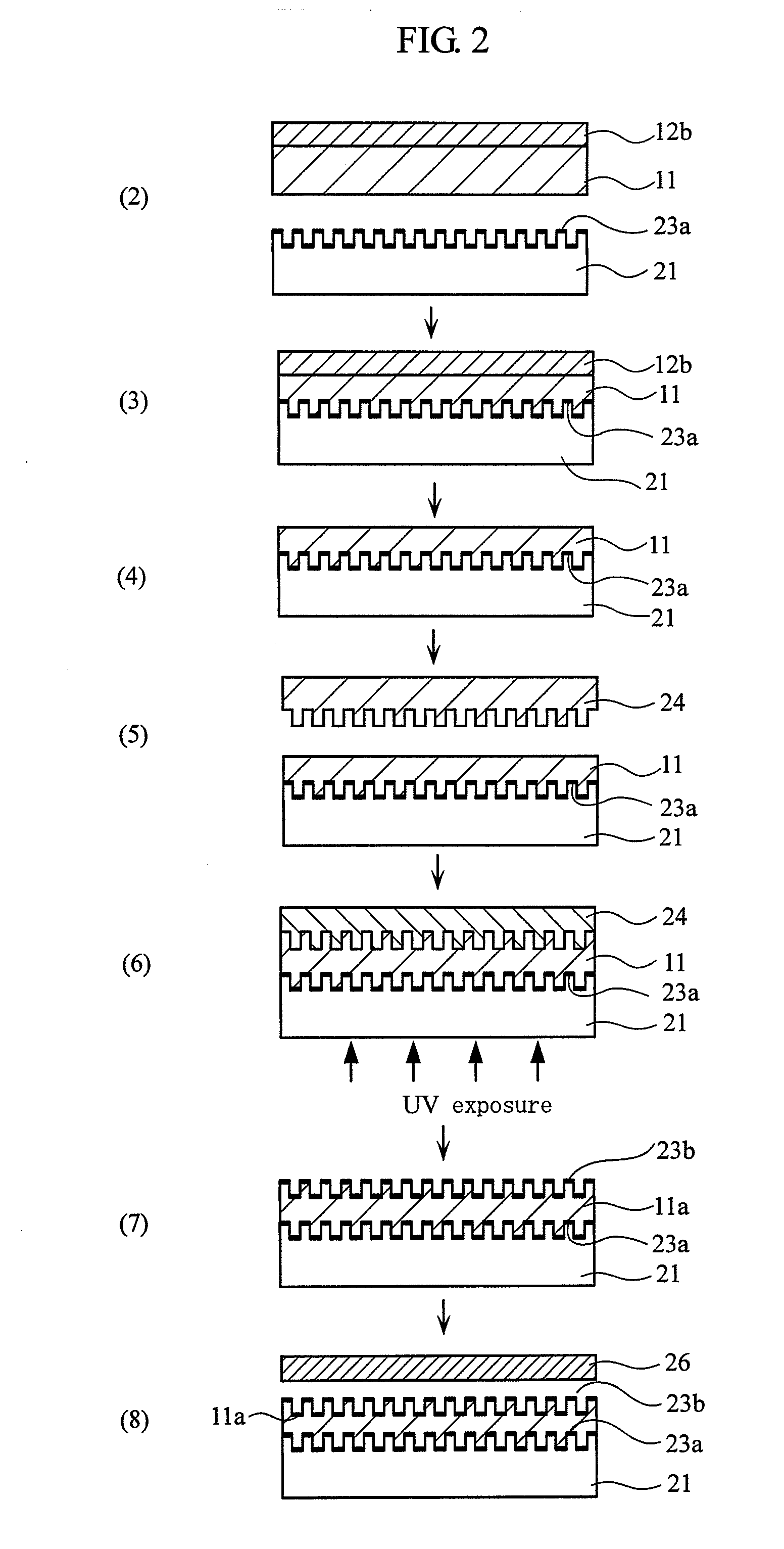Photo-curable transfer sheet, process for the preparation of optical information recording medium using the sheet, and optical information recording medium
- Summary
- Abstract
- Description
- Claims
- Application Information
AI Technical Summary
Benefits of technology
Problems solved by technology
Method used
Image
Examples
example
Example 1
(Preparation of Polymer 1 Having Hydroxyl Group)
Polymer Formulation 1
[0190]
Methyl methacrylate74.6 parts by weightn-Butyl methacrylate13.2 parts by weight2-Hydroxyethyl methacrylate12.1 parts by weightAIBN 1.2 parts by weightToluene 70 parts by weightEthyl acetate 30 parts by weight
[0191]A mixture of the above Formulation 1 was heated to 70° C. with moderately stirring to initiate the polymerization, and stirred at this temperature for 8 hours to provide polymer 1 (acrylic resin) having a hydroxyl group on its side chain. The solid content was adjusted to 36% by weight (polymer solution 1).
[0192]The polymer 1 had Tg of 91° C. and weight average molecular weight of 110,000.
Composition Formulation 1
[0193]
Solution 1 of polymer having hydroxyl group100parts by weightHexanediol dimethacrylate (KS-HDDA)100parts by weightTrimethylol propane triacrylate (TMP-A,20parts by weightavailable from KYOEISHA CHEMICAL Co.,LTD)2-Hydroxy-3-acryloyloxypropylmethacrylate20parts by weight(G-2...
example 2
[0195]Example 1 was repeated except for the procedure for preparation of Composition Formulation 1 and later procedures, which were carried out below, to prepare a full-edge type roll of photo-curable transfer sheet.
Composition Formulation 1
[0196]
Solution 1 of polymer having hydroxyl group100parts by weightHexanediol dimethacrylate (KS-HDDA)110parts by weight2-Hydroxy-3-acryloyloxypropylmethacrylate20parts by weight(G-201P, available from KYOEISHACHEMICAL Co., LTD)Diisocyanate1part by weight(BXX5627, available from Toyo Ink Mfg.)Irgercure 651 (available from Chiba-Geigy)1part by weightHydroquinone monomethyl ether (MEHQ)0.05part by weight
[0197]The above Formulation 1 was homogeneously dissolved to give a mixture, which was applied onto a whole surface of a release sheet (width: 140 mm, length: 300 m, thickness: 75 μm; trade name: No. 23, available from Fujimori Kogyo) and dried to form a photo-curable transfer layer of thickness of 25 μm. Subsequently, a release sheet that is same a...
PUM
| Property | Measurement | Unit |
|---|---|---|
| Percent by mass | aaaaa | aaaaa |
| Thickness | aaaaa | aaaaa |
| Percent by mass | aaaaa | aaaaa |
Abstract
Description
Claims
Application Information
 Login to View More
Login to View More - R&D
- Intellectual Property
- Life Sciences
- Materials
- Tech Scout
- Unparalleled Data Quality
- Higher Quality Content
- 60% Fewer Hallucinations
Browse by: Latest US Patents, China's latest patents, Technical Efficacy Thesaurus, Application Domain, Technology Topic, Popular Technical Reports.
© 2025 PatSnap. All rights reserved.Legal|Privacy policy|Modern Slavery Act Transparency Statement|Sitemap|About US| Contact US: help@patsnap.com



